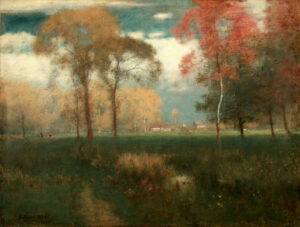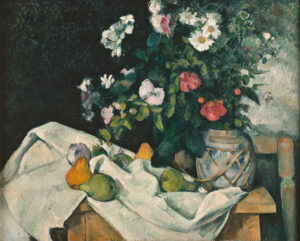
Paris, 1780s. In his studio, Jean-Honoré Fragonard paints the portrait of a young boy with a direct gaze, draped in a shimmering coat. The painter does not seek the smooth perfection of his contemporaries. He wants life, movement, the instant.
A Painting That Breathes
The face emerges from a deep brown, almost nocturnal background. The rosy cheeks catch a soft light that makes the child’s clear eyes shine. His chestnut hair undulates with a freedom that contrasts with the rigor of official portraits. Fragonard works with rapid, fluid strokes. The white collar dissolves into luminous flashes. The brown coat opens onto a vermilion red lining that enlivens the composition. This nervous, almost sketched technique reveals the influence of Rubens and Rembrandt rather than that of François Boucher, his Rococo master.
A Dialogue with the Flemish Masters
In the 1780s, Fragonard moves away from the gallant scenes that made his reputation. He explores a more intimate, more contemplative painting. This small format testifies to a personal search. The artist collects and studies Flemish and Dutch works. He adopts their brown palette and expressive touch. The 17th-century costume is not insignificant: it is a direct homage to these masters of the past. Some see Alexandre Évariste, Fragonard’s own son, but nothing formally confirms this.
Jean-Honoré Fragonard
Jean-Honoré Fragonard (1732-1806) remains one of the greatest names in 18th-century French painting. From his fêtes galantes to his intimate portraits, he demonstrates exceptional technical virtuosity and rare sensitivity.
Think about it
💭 To what extent does this portrait reflect the Enlightenment debate between artifice and nature?
About this work
- A Boy in a Red-lined Cloak
- Jean-Honoré Fragonard
- 1780s
- Oil on wood
- 20.8 × 16 cm
- The Cleveland Museum of Art
- https://www.clevelandart.org/art/1942.49






